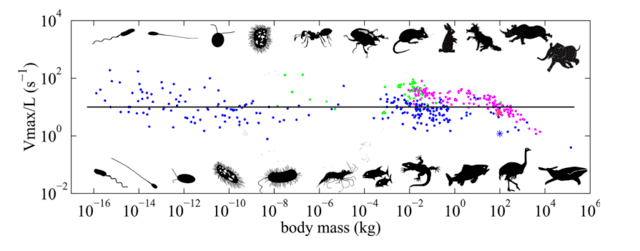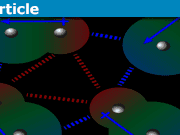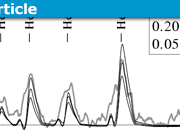Exploring a Paper on Scaling Laws and the Speed of Animals
Table of Contents
Key Points
- Scaling arguments are powerful tools in physics between vague descriptive arguments and rigorous formulae.
- Examples of scaling arguments include the Square–Cube Law and Terminal Velocity.
- A paper by Nicole Meyer–Vernet and Jean–Pierre Rospars examines the top speeds of organisms of varying sizes from bacteria to blue whales.
- The paper finds that the time it takes for an animal to move its body length is almost independent of mass across 21 orders of magnitude.
- They derive a simple scaling argument and order–of–magnitude estimate for this remarkable fact.
- Three features shared universally among moving organisms help explain this observation: density, force-per-unit area of muscle proteins, and metabolic rate per unit mass.
- The authors argue that the maximum speed/body length is approximately 10 body lengths per second, depending on the zeroth power of mass.
Introduction
In a recent American Journal of Physics issue, I read an interesting paper by Nicole Meyer-Vernet and Jean-Pierre Rospars examining the top speeds of organisms of varying sizes, from bacteria to blue whales. They found that the time it takes for an animal to move its body length is almost independent of mass, across 21 orders of magnitude. They derived a simple scaling argument and order-of-magnitude estimate for this remarkable fact. Before further elaborating on their paper, I will give an overview of scaling arguments and their power.
Scaling Arguments
There is a false dichotomy in physics: concepts can either be explained in quasi-philosophical vague descriptive arguments or in terms of rigorous formulae that take years of study to understand. For example, one could describe general relativity with the bowling-ball-on-a-bedsheet analogy, and when that fails, crack out the Einstein field equations. However, this sad dichotomy is a happy trichotomy: in between the two extremes is the powerful tool of scaling arguments.
A scaling argument is a step above a Fermi calculation. In a Fermi calculation, we make approximations of various parameters in a formula and multiply them together to estimate an order of magnitude, neglecting precision. With a scaling argument, we examine how a dependent quantity changes as an independent quantity is varied, neglecting finer details, and dimensionless coefficients, and look only at the limiting behavior.
A well-known example is the Square-Cube Law, dating back to Galileo and described quite well in the Haldane essay, On Being the Right Size. The Square-Cube Law essentially states that if something, be it a chair or a person or whatever, was made twice as tall, twice as wide, and twice as deep, its volume and mass would increase by a factor of eight, but its ability to support that mass, its cross-sectional area, would only increase by a factor of four. This means as things get bigger, their weight becomes more significant compared to their strength (ants can carry 50 times their weight, squirrels can run up trees, and humans can do pull-ups).
Another example is terminal velocity: the drag force depends on the cross-sectional area, which (assuming a spherical cow) goes as the square of the radius (or the two-thirds power of mass), while the weight depends on the volume, proportional to the cube of the radius or the first power of mass. As Haldane graphically puts it
You can drop a mouse down a thousand-yard mine shaft; and, on arriving at the bottom, it gets a slight shock and walks away, provided that the ground is fairly soft. A rat is killed, a man is broken, a horse splashes.
Of course, theoretical physics is more than about description, it’s about prediction. So, before writing this article I decided to make a prediction based on the square-cube law: the cross-section of a human is proportional to the square of their height, or the two-thirds power of their weight. Thus, if we measure the peak strengths of the strongest humans at different weights, they should scale with the two-thirds power of weight. I make this prediction without knowing anything about biomechanics, metabolism, and training, just the fact that bigger guys tend to be stronger.
Looking up the record for the heaviest deadlift (picking a bar off the ground to hip level) for men of varying weights, we see that the records do follow the two-thirds scaling law from the smallest lifters up to about 220 pounds. Above that, it breaks down because the lifters generally get fatter without getting much more muscular. One can do a power-law fit this data, and I find that the best-fit power is .67 ± 0.05, consistent with my 2/3 prediction. This article is not about weightlifting; I was using this as an example to show that I can make an accurate prediction about a complex system (the human body) with a very simple scaling argument. Note that these arguments are useful for predicting the power of a relationship, but aren’t necessarily good for predicting the actual value.

The deadlift world record at different body weights, and the 2/3 power-law prediction. Note that these axes are logarithmic, which means that power functions appear as straight lines. Because the data and the prediction appear to have the same slope on log axes, it means they scale with the same power.
Now, back to the animal speed paper. The main observation that the paper is based on is summarized in its only figure. They look at how many times an animal can cover its length in a second. Using humans as an example, Usain Bolt can cover his height about six times in a second, while swimmer Florent Manaudou can cover his length roughly once per second. Their sampling ranges from bacteria at 10-16 kg who move by swirling flagella, to whales at 105 kg who move by undulating their bodies, covering 21 orders of magnitude in mass. They argue that the average length-traversal time is roughly independent of mass across all these orders until you get to the very large, although there is a significant deviation about this average. Nevertheless, even if you take the fastest bacteria and compare it to the slowest whale to try to shoot down their argument, you will have to explain a -0.06 power law instead of a 0.0 power law, so their message stands: to zeroth-order, body traversal speed is independent of mass.
Why this is the case on scaling grounds
They care about deriving this constant relationship and estimating its magnitude (body-lengths-per-second), not exactly but to within a factor of ten.
They argue that the moving speed is determined by three features shared universally among moving organisms. The first is that because all life forms are mostly water and more-or-less buoyant, they have roughly the density of water, 1 kg/L. The second is that all motility is caused by the contraction of muscle proteins that have a similar structure across all life forms. Based on the non-covalent binding energy of these proteins and their diameter, the force-per-unit area they can exert is roughly 20,000 N/m2. Could a square-meter cross-section of muscle support two tons? I’m picturing an elephant leg and I can’t believe it. The final feature is the metabolic rate per unit mass, which is related to an organism’s ability to transfer heat across its surface. The paper states that this is 2 kilowatts per kilogram of muscle. The paper doesn’t explain where this comes from, citing controversy in the literature. All these quantities have variation from organism to organism, but together it is still much less than the 20 orders of magnitude of mass that are being considered.

Top speed per length of organisms of various sizes. This image is from the paper I am discussing. If there is a copyright issue I can remove it.
The authors use dimensional analysis to figure out what powers of each quantity are required to describe the velocity per body length, which has units of frequency (meters per second per meter). They show that
Maximum speed/body length ~= (metabolic rate)x(density)/(protein fibre strength)~=10 body lengths per second
And this is a constant, depending on the zeroth power of mass, as was insinuated by the data. To reiterate, their standard of merit for this “prediction” isn’t that all animals cover their body length ten times per second, but that creatures of all sizes are roughly within an order of magnitude: a tenth to ten times this prediction. The paper goes on and gives some mechanical explanations as to why this makes sense; the energy required and work performed in wagging a flagella or moving a leg. The article also addresses the fact that there does seem to be a negative scaling between size and speed for the biggest organisms and makes an argument that the mass-independent scaling law applies to creatures up to 1.4 meters in size.
Conclusion
Overall, I enjoyed reading this paper because it took a fairly remarkable fact and explained it using the simple but powerful tools of scaling analysis and Fermi calculation. I thought it was cool how three features shared across all life forms lead to this universal locomotion frequency.
Ph.D. McGill University, 2015
My research is at the interface of biological physics and soft condensed matter. I am interested in using tools provided from biology to answer questions about the physics of soft materials. In the past I have investigated how DNA partitions itself into small spaces and how knots in DNA molecules move and untie. Moving forward, I will be investigating the physics of non-covalent chemical bonds using “DNA chainmail” and exploring non-equilibrium thermodynamics and fluid mechanics using protein gels.








The additional constraint they apply on large animals, which oscillate their length L with some frequency f, is that there is a maximum angular acceleration that can be applied. The maximum torque depends on the muscle fibre force, the cross sectional area, and the length of the "lever arm," while the moment of inertia depends on the density, volume, and distribution of the shape. Comparing torque to moment of inertia they get a second-order ODE for the angle of the oscillating part (tail, leg, whatever) over time, which they integrate to find the time required to oscillate to a certain angle. This gives them an *absolute* maximum speed. So they compare their "maximum speed per body length" to the "absolute maximum speed" and solve for the body length at which the two are equal.
Hope that made sense. Picturing a cheetah, they are about 1.4 meters long, and plugging in their values for the "maximum speed" you actually get a fast jog, about 4 m/s. If you apply 10 bodies/second to 1.4 meters, you get 14 m/s=50 km/h which is about half a cheetah's top speed.I wondered, isnt square-cube law only affects acceleration? Maintaining a speed at basic means acceleration has to overcome drag force of water or air. With bigger body, the drag force is higher, but not so high as the mass. With theese assumptions i dont find it strange that speed is rather independent from mass.
Wow. How did I miss this one? This is a great article. Thanks for writing it.
Some specific examples across species would help understanding this topic!
“I couldn’t help but be reminded of another similar study – the one finding (statistically) constant time of emptying the bladder across five orders of magnitude of animal mass (what the authors dubbed ‘the law of urination’):
[URL]http://arxiv.org/abs/1310.3737[/URL]”
My father is a urologist and I went to a conference he organized and talked about this paper! The model they came up with doesn’t quite make sense given their data. They read too much into their measured scaling, when I’m sure the error bars on it are huge to the point of making it insignificant. There was another paper using dimensional analysis to find a better model.
[quote]The second is that all motility is caused by the contraction of muscle proteins that have a similar structure across all life-forms.[/quote]
Certainly all animals use the same types of muscle proteins for movement, but bacteria and other motile single-celled organisms use very different types of proteins for motion (for example, actinomyosin contraction in animals is driven by ATP hydrolysis whereas flagella are powered by the movement of protons across a membrane). Of course, the authors’ estimate relies solely on considering the mechanical properties of proteins in general, so it seems to not be so dependent on how these proteins generate motion, just on the fact that proteins are generating force.
I couldn’t help but be reminded of another similar study – the one finding (statistically) constant time of emptying the bladder across five orders of magnitude of animal mass (what the authors dubbed ‘the law of urination’):
[URL]http://arxiv.org/abs/1310.3737[/URL]
Congrats [USER=569939]@klotza[/USER] on this Insight making it to the first page of Reddit! Well deserved!
This 1.4m “dominance zone” I guess I would call it keeps nagging at me. I’d be grateful for any elaborations you could offer there… as I’m not able to access the paper.
Hi everybody, this is the author. I hope enjoy what I have written, and let me know if anything needs clarification.
All I know is that ants and beetles appear to be on the image.
Nice article! Adrian Bejan talks about this kind of thing in his book Design in Nature. He even extends the reasoning to the evolution of technology, like cars and planes. His idea is that the world is organized by flow. That structures that increase the flow of matter are selected.This is related to the idea that energy from the sun flows through the surface of the earth (coming in as yellowish light and leaving as infrared), and matter forms cycles (like the water cycle, the carbon cycle, etc.).
My source is mainly experience from when I used to be into powerlifting. However this paper also asserts the claim, with better data.http://jap.physiology.org/content/89/3/1061.short"Although it is possible that larger lifters activate less of their contractile filaments, the more likely explanation for their reduced strength per cross-sectional area is that they carry more of their body mass as noncontractile tissue. "
I'm wondering, is the same true for animals like spiders that don't use the same mechanisms to move as most animals do?
I'm slightly confused about the title of this… like I understand most parts but it just seems like you are saying all animals have the same rate at which they can move there own body length. Would just like clarifying on that
You said, "Above that it breaks down because the lifters generally get fatter without getting much more muscular."; do you have a source on that?
"metabolic rate per unit mass … 2 kilowatts per kilogram of muscle. The paper doesn’t really explain where this comes from, citing controversy in the literature" Yes. This is controversial, but the argument is usually between a power law with an exponent of 2/3 or 3/4. A fascinating paper (The fourth dimension of life: fractal geometry and allometric scaling of organisms. West GB, Brown JH, Enquist BJ. Science. 1999 Jun 4;284(5420):1677-9) will definitely be interesting to readers of this post.
The additional constraint they apply on large animals, which oscillate their length L with some frequency f, is that there is a maximum angular acceleration that can be applied. The maximum torque depends on the muscle fibre force, the cross sectional area, and the length of the "lever arm," while the moment of inertia depends on the density, volume, and distribution of the shape. Comparing torque to moment of inertia they get a second-order ODE for the angle of the oscillating part (tail, leg, whatever) over time, which they integrate to find the time required to oscillate to a certain angle. This gives them an *absolute* maximum speed. So they compare their "maximum speed per body length" to the "absolute maximum speed" and solve for the body length at which the two are equal.Hope that made sense. Picturing a cheetah, they are about 1.4 meters long, and plugging in their values for the "maximum speed" you actually get a fast jog, about 4 m/s. If you apply 10 bodies/second to 1.4 meters, you get 14 m/s=50 km/h which is about half a cheetah's top speed.
Thanks for the insight! This is a very interesting topic for me, but I must say I was quite skeptical until I realized this is about TOP speed, more in line with physical limits. I'm fairly certain mobility is advantageous across most forms of beings so It certainly makes sense to me that evolution has pushed towards the limits across all scales.
Nice article @klotza!